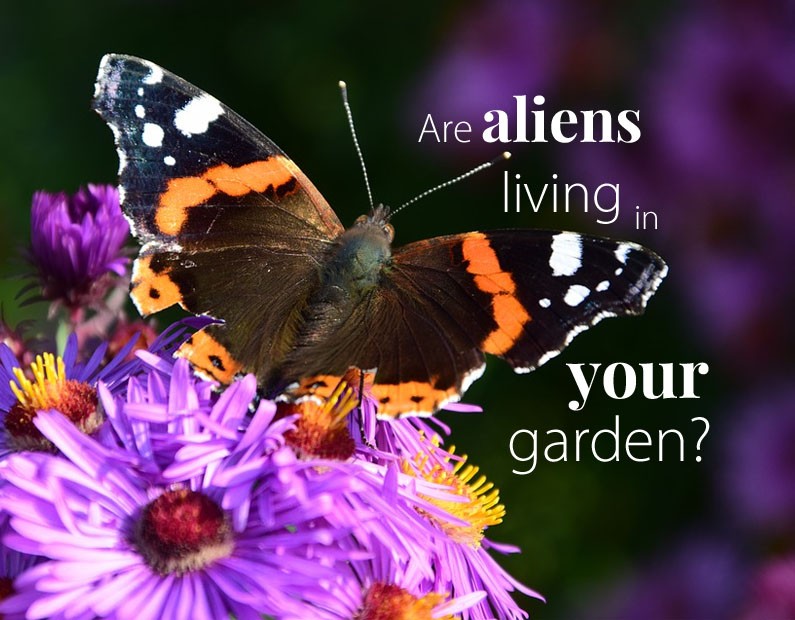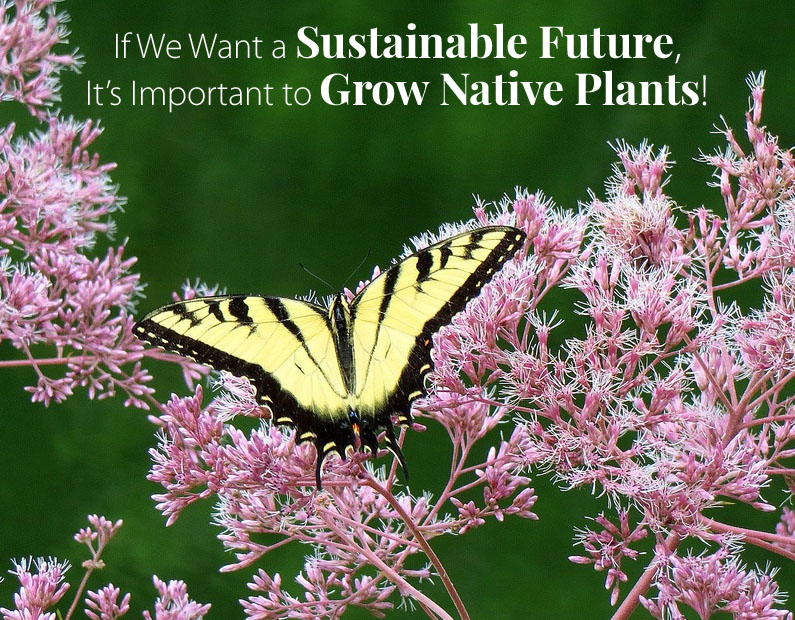Probably.
Most of the landscape plants found in local nurseries are “alien species”; they are usually non-native plants also referred to as “exotic species”. These plants can become invasive, competing with our native species and doing real damage to habitat.
Now, I realize that this is beginning to sound a bit political ~ ‘non-natives’ and ‘invasive’ sound like “fighting words” but I promise I am only referring to plants, folks. And, my end game is to make sure I do what I can to educate, not “build walls”.
I want to be clear about one point: not all non-natives are invasive. There are plenty of “exotic species” plants that do not cause any environmental harm. Lots and lots of common garden plants, like the friendly petunia, wouldn’t hurt a fly. On the other hand, if you are in the South, think KUDZU and you get the point.

There are lots of federal, state, local and NGOs working on this issue. It’s a big one; according to Dr. Pimentel, an emeritus professor at Cornell, this issue (when combined with animal invasives) has cost the US over $100 billion. The effects of invasives species is far reaching, and we all need to do our part.
We have been trying to work against this invasion on our own farm, and over the past few years we have been introducing more and more native plants into our offerings at The Growers Exchange. Gardeners make a huge difference in this effort by making sure that your plant choices do not include invasive species and if you have them in the yard, begin replacing with native plants.
Questions & Answers About Native Plants
WHAT ARE NATIVE PLANTS?
In one word, native plants are local. They are plants that have been growing in a certain habitat for thousands of years, and are well adapted to the climate, light, and soil that make up their ecosystem.
WHY ARE NATIVE PLANTS IMPORTANT?
Native plants provide the foundation for a healthy ecosystem. If planted in the right place, they require less water, fertilizer, and maintenance to thrive. They are also vital as ‘host plants’ to the insects that are critical to our ecosystem and are a source of food and protection to other species.
WHAT IS A NATIVAR?
A nativar is simply a cultivar of a native species, and we feel that they are a great compromise for those who want to plant natives but also need better garden performance. They truly are a win-win.
CAN YOU USE NATIVES WITH OTHER PLANTS?
Native plants look and feel so natural because they belong together! They are great choices for every season, and provide so many choices in terms of color and texture. Create an entire native garden or add to your existing garden or landscape.

If We Want A Sustainable Future, It’s Important To Grow Natives!
Native flowering plants have been an interest of mine for many years. I feel they are a natural companion for the herb plants in our garden. Feeling our herb garden needed more color, we turned to native plants for their sustainability and ability to produce copious amounts of nectar, pollen, and seeds for all of our non plant garden residents. Herb plants attract a myriad of insects to their flowers. Bees, butterflies, and beetles almost beyond description are attracted to our herb garden, sometimes so numerous, the host plant seems to be moving. Occasionally I will spot an unknown beetle swarming an herb plant’s flowers; I have to stop and wonder how so many can live nearby, and I never have seen one before?
Hummingbirds by day and hummingbird moths and Luna moths by night, our herb garden oasis is always filled with activity. Plant pests are never a problem, because amongst all the activity, lurk predators looking for prey. Aphids beware, Lady Bugs are stalking you! Grow numerous and they will find you! Praying Mantis grab and devour any insect large enough to hold, be they good bug or bad bug. With the food chain fully loaded from the soil up, we see plenty of birds, lizards, and a few snakes. Our herb garden is busy night and day.
For many years, I collected wildflower seeds for planting in our conservation acres. It is many of these same native plants that I have chosen to grow in our garden with herb plants. Today, there are so many plant choices available, it is difficult to decide which is best. The super hybrids and cultivars will always have the biggest and brightest flowers, but look deeper than outer beauty and you will see few, if any, insects visiting their flowers; they have no nectar or pollen for them. They do have their place, but for planting with herbs, we choose native plants. Their flowers are beautiful, and they have what it takes to support the above mentioned activity. We hope you will find these new plants a garden delight.

Not a comment, but do have a question….
Have a yard planted in FL sand, sigh – I consider the ‘grass’ to be an invasive, and refer to it as “Rope Weed”!
What grass should have been used, also what flowers/shrubs will do best in this medium? Guess it was two questions ; ^)
Check out Florida Native Plant Society’s webpage. There is a ton of information on what to plant and where to plant it. Hope that helps!
Will do … thanks!
I read about a lavender that might grow in Sarasota Florida. Is this possible?
Thanks to our friends at The Herb Society of America! A great organization so check them out!